
You say “best”. Don’t you mean “favourite”?
Yes.
Didn’t you used to do fifty films?
Yes.
And you’ve combined fiction films with documentaries this year. Don’t you usually separate them?
Yes.
Your approach to release dates seems to be pretty haphazard.
Yes.
You haven’t included Spotlight, 45 Years, The Big Short or The Hateful Eight, amongst others. What, did you just not see them?
Yes.
If I disagree with any of your choices, should I leave a comment, then maybe a follow-up via email and social media to make sure you know that I really didn’t like the films you did?
Yes.
THE BEST FILMS OF 2015
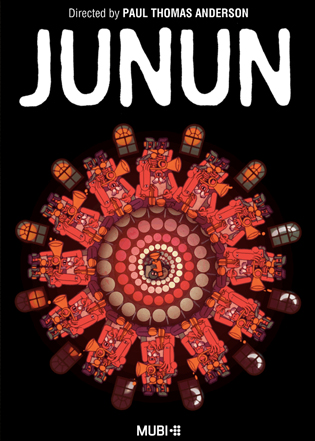 40. JUNUN
40. JUNUN
Paul Thomas Anderson’s one hour documentary about his frequent collaborator, Radiohead’s Johnny Greenwood, recording an album in Rajasthan with Israeli composer Shye Ben Tzur, features no narration and provides little context. But as with similar context-less documentaries (2014’s Maidan, 2013’s Leviathan), this made it all the more compelling. Sure, the astoundingly good music is doing a lot of the heavy lifting, but PTA employs a kinetic, handheld quality that we never see in his controlled, steady works. Here, things are out of focus, they bump around, the tripod is placed on the ground with a thud mid-shot, and yet it all comes together in a way that almost inexplicably feels like vintage PTA. Junun is presented as a mishmash of voyeuristic shots and random moments, a patchwork quilt of sorts, but is actually so carefully and perfectly executed.
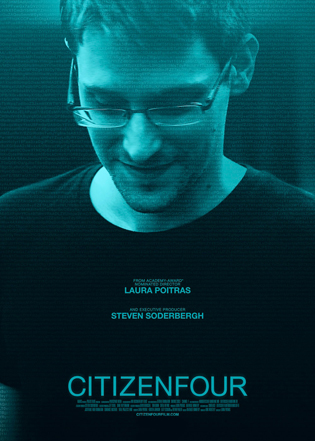 39. CITIZENFOUR
39. CITIZENFOUR
It may be unsettling when a documentary takes a firm and unequivocal position on an issue, but given the context in CitizenFour, it can be forgiven. Because having access to one of the world’s most infamous people in the days leading up to his infamy is a rare and undeniably exciting thing to witness. It’s difficult to watch this and not see Snowden as a thoughtful person who is fully aware of the consequences of everything that is about to happen to him and to the world, and director Laura Poitras quietly observes him as the events unfold. It’s an incredible work, a vital document of history that is depicted supreme confidence and care.
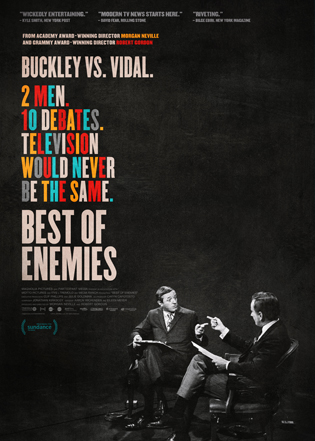 38. THE BEST OF ENEMIES
38. THE BEST OF ENEMIES
It’s hard to imagine a film more up my alley: a documentary that chronicles the famous televised encounters between liberal Gore Vidal and conservative William F Buckley during the Republican and Democratic conventions of 1968. Displaying their prickliest moments and the stories behind their relationship, the film neither praises or damns them, showing the best and worst of each man in equal measure. It celebrates the injection of life into dull political coverage, but also shines a light on the unfortunate legacy they’ve left for the world of news today. Engaging, beautifully-made stuff.
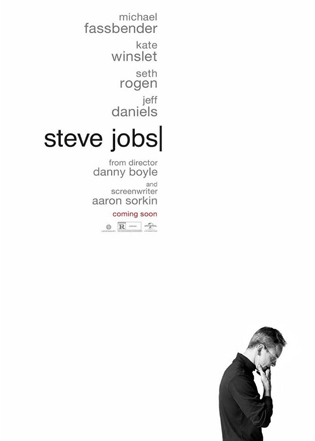 37. STEVE JOBS
37. STEVE JOBS
Few things worked in favour of Steve Jobs more than the fact that writer Aaron Sorkin wrote this almost immediately after he wrote The Social Network. It allows us to draw a line between the two, a series of conceptually-connected works in which he examines the human condition through the modern day tech revolutionaries. There’s no deification here: although Sorkin has always heralded those who change the world through innovation, he’s more interested in examining a deeper question. What if a person with almost no social skills invented the world’s biggest social network? What if someone obsessed with making the perfect machine was himself profoundly imperfect? Taking place over the minutes leading up to three separate product launches, Steve Jobs is my favourite type of biopic, and also one of the most contentious: one that openly conflates real events into something that is more thematically revealing than literally revealing. It’s the type of storytelling that helps us avoid the sort of biographical box-ticking that made Ray and Walk the Line being largely identical. The few aesthetic bugs – Sorkin recycles an awful lot of lines from his earlier works, for instance – fade away in shadow of a truly excellent script. Director Danny Boyle completely owns the film, with a kinetic style that completely suits the kinetic dialogue.
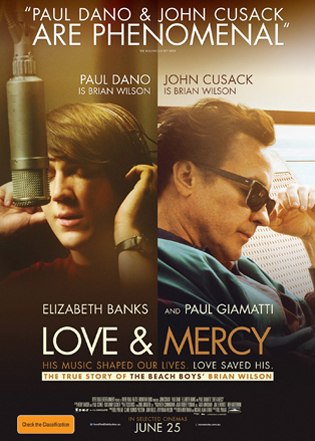 36. LOVE & MERCY
36. LOVE & MERCY
Speaking of biopic box ticking, there was something about Love & Mercy that seemed from the outside to be simply there to fulfill the “inevitable cinematic Brian Wilson life story” requirement. That the film would actually turn out to be one of the greatest musician biopics of the last decade was a pretty big surprise. Wisely focusing on small segments of Wilson’s life to explore who he was (rather than skimming over the whole shebang), it avoids the strained effort of trying to be definitive, but ends up being just that due to its uniquely complex, nuanced approach. It also boasts a tangible, tactile aesthetic that makes it feel like a work of art in its own right, rather than a faithful recreation of somebody else’s. Paul Dano, John Cusack, Paul Giamatti and especially Elizabeth Banks are extraordinary in the film, and director Bill Pohlad wisely avoids the temptation of suggesting that Wilson’s genius came from his tortured past, an easy syllogism that too many biopics succumb to.
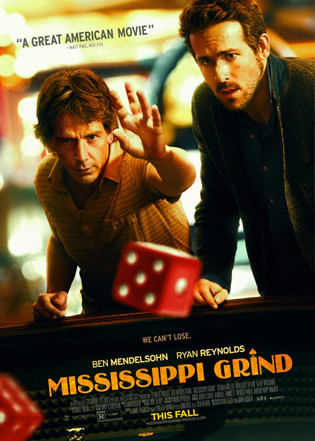 35. MISSISSIPPI GRIND
35. MISSISSIPPI GRIND
For work reasons, I ended up reading an awful lot of Mississippi Grind reviews before I actually saw the film. Every single review compared it to Robert Altman’s California Split, and I wondered if that was simply an easy comparison: a buddy movie between an obsessive gambler and his more laid-back friend, the poker, the horse racing, the syllabic similarity of the titles. Turns out the comparison was apt beyond the mere superficial. Mississippi Grind is absolutely cut from the same cloth as Altman’s 1974 classic, right down to its unexpected left turn of an ending. A strong character study with incredible central performances, a solid and unpretentious script, and confident direction. This was the exact type of film I hadn’t realised I was missing.
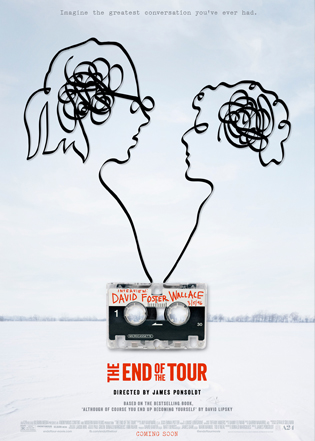 34. THE END OF THE TOUR
34. THE END OF THE TOUR
I have to admit to being unfamiliar with David Foster Wallace outside of his reputation, and was unsure of how the film would play without suitable prior knowledge. The End of the Tour turned out not to be a look at the genius of one great writer, but an examination of the expectations and demands that we have of people who create great works. The machinations of the interview process has never been better depicted than here, with its inherent awkwardness recognisable from both sides. It is a false relationship, but Wallace and Lipsky acknowledging this fact does nothing to rid them of that falseness. They’re trapped in a co-dependency that satisfies no one, and the way in which they play this relationship is superb, and so different from the dynamic that we’re used to seeing.
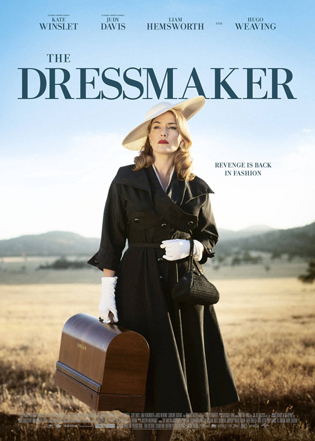 33. THE DRESSMAKER
33. THE DRESSMAKER
Everything I’d seen of The Dressmaker (trailers, posters, etc) suggested to me that it was a drama, so I was more than a little surprised when I sat down to watched them film and it showed its credentials as a comedy, and a broad one at that. It wavers once or twice with a tonal highwire act that could have so easily gone disastrously wrong, but its gambles ultimately pay off. The Dressmaker is a triumph, with Jocelyn Moorehouse’s exceptional direction heading up a production in which every department seems determined to showcase its best work, from David Hirschfelder’s perfect score to Don McAlpine’s amazing cinematography, and superb editing from Jill Bilcock, easily one of the greatest editors working today. Laugh-out-loud funny, with great performances and extraordinary opening and closing sequences that bookend the film brilliantly.
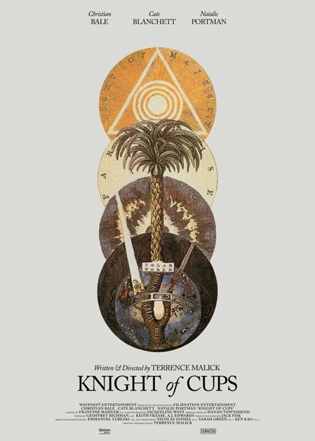 32. KNIGHT OF CUPS
32. KNIGHT OF CUPS
It’s not as if Terrence Malick’s earlier films were wildly divergent, but in recent years he’s clearly settled into a style. Knight of Cups feels of a piece with 2013’s To the Wonder: languid, poetic ruminations that have no interest in traditional plots. This style seems more common with true experimental films, or at least how they were twenty years ago, which is why it’s strange to see them now and with movie stars. Malick’s flourishes are becoming familiar, and with familiarity comes easy mockery: the searching fish-eye camera, the rush of movement, characters standing on a beach, etc. And yet Malick seems to be using all of this to explore something deeper. If you can’t get past these cosmetics – and I wouldn’t blame you, as it is all deliberately cosmetic – then there’s not much here to grasp onto. But Malick is one of the true originals in filmmaking, and nobody is doing what he is doing. I am hypnotised by his work, and no less so by Knight of Cups.
 31. A PIGEON SAT ON A BRANCH REFLECTING ON EXISTENCE
31. A PIGEON SAT ON A BRANCH REFLECTING ON EXISTENCE
The final chapter of Roy Andersson’s Living Trilogy is possibly his best film yet. His laconic, existential, black comic tableaux are as refined and funny as they’ve ever been. The connective tissue is a loose plot that follows a pair of travelling salesman who are trying to sell joke props to uninterested parties. That these deeply unfunny products are considered high comedy within the strictly-defined world that Andersson has created is funny in itself, and the closest thing we have to an emotional and logical Rosetta Stone for Andersson’s universe. A career highlight from one of the most original working auteurs.
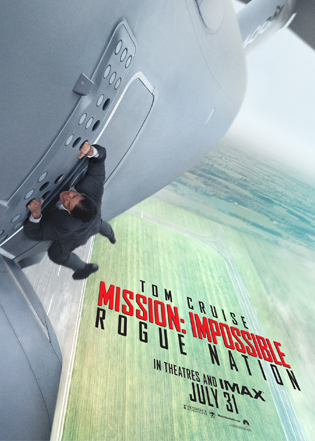 30. MISSION: IMPOSSIBLE – ROGUE NATION
30. MISSION: IMPOSSIBLE – ROGUE NATION
The fifth installment of one of the best action franchises, and the second installment in which the franchise’s titular colon requires the subtitle to be awkwardly distinguished with an emdash, has hit its stride. For so long, this was a beautifully weird franchise that reinvented its style with each entry, so much so that it’s now somewhat shocking to see elements outside of Cruise, Ving Rhames, and the now-mandatory Langley reference, survive from film to film. Ghost Protocol was the true template for the new direction, and Rogue Nation is the next episode, a stylistic and narrative continuation, and an appropriate way to reinvent what was originally a TV series with a mission-of-the-week. Alec Baldwin, once Cruise’s leading man contemporary, is now his elder statesman, an effective M going forward. The team is now in place, and although it would be nice to see some of the women back –Paula Patton? Maggie Q? Thandie Newton? The ghost of Keri Russell? – it’s largely impossible not to love Rebecca Ferguson’s Ilsa. This film is as great as adrenaline delivery systems get, with ingeniously-constructed stunts, and Cruise playing knockabout punchdrunk better than ever. Watching him stumble about as his superheroism takes its toll, barely able to stand, is the most I’ve ever enjoyed watching Hunt, and a proper throwback to the mortal Ethan Hunt of the first film.
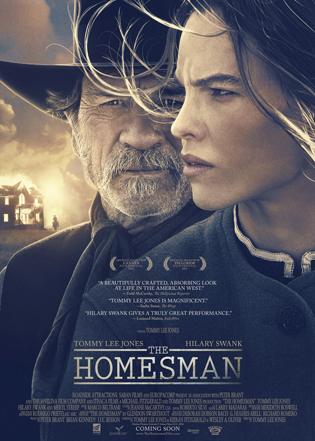 29. THE HOMESMAN
29. THE HOMESMAN
Since Unforgiven, filmmakers have striven to make Westerns with varying degrees of realism, with varying degrees of success. It’s difficult to think of too many that are better than The Homesman. This tremendous film from Tommy Lee Jones has stuck with me all year, thanks largely to the excellent performances from Jones and Hilary Swank. Its central thesis – that life in the old west could be even more difficult for a strong, financially-independent woman, than it was for a submissive woman treated as property – is one I don’t think I’ve seen before, and a concept that burrowed deep. So many images from this film remain with me, and I can’t wait to revisit it.
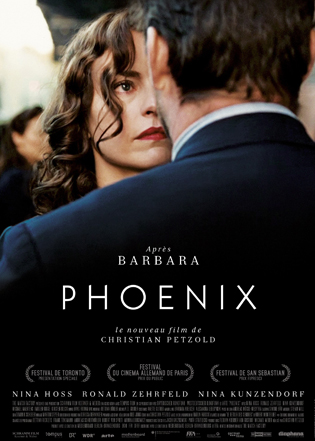 28. PHOENIX
28. PHOENIX
Christian Petzold, director of 2012’s excellent Barbara, bests that work with a twist-filled drama set shortly after World War Two. After emerging from a concentration camp, a woman undergoes facial reconstruction surgery, and attempts to track down the husband who almost certainly gave her up to the Nazis to save his own skin. He fails to recognise her, but notices the similarity, and convinces her to pose as herself in order to claim a lost fortune that they will later split. She decides to play along, keeping the truth to herself and continuing with the charade to discover what he had actually done when she was captured. And all of that is just the film’s setup. The manner in which Phoenix unfolds, all the way through to its perfect ending, is restrained, affecting and inspired.
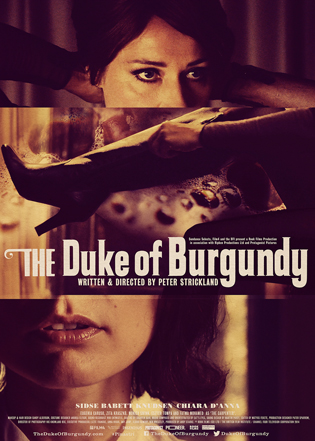 27. THE DUKE OF BURGANDY
27. THE DUKE OF BURGANDY
Peter Strickland’s films are visceral puzzles. They are complex mysteries that demand to be unraveled, just not intellectually. He throws noises and images at us, and we use those clues to unravel the emotional journey of the characters. That sounds pretentious as fuck, but the pretention lies only in my description, not the film itself: it’s honest filmmaking that just happens to dispense with the artifice of plot and structure. It approaches something more like an experimental film, formal and dangerous all at once. I don’t always understand what’s going on, I don’t know what the rules are, which country we are in, what time period, but I love it, and I want to spend more time there.
 26. WORLD OF TOMORROW
26. WORLD OF TOMORROW
It feels strange putting a short film in what is traditionally a feature list (two, actually, given Junun is only 54 minutes), but when we covered Don Hertzfeldt on Hell Is For Hyphenates last month, I discovered that one of the world’s best filmmakers was one who preferred the short animation format. His latest film, World of Tomorrow, is amongst the best science fiction films I’ve ever seen. The execution of its concept – a young girl is visited by a future clone which houses her consciousness hundreds of years from now – is both brilliantly horrific and deeply funny. I watched it three times in succession before playing it to everyone I could find.
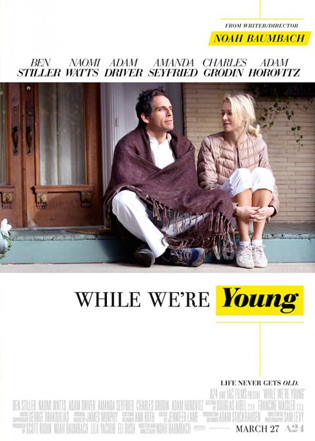 25. WHILE WE’RE YOUNG
25. WHILE WE’RE YOUNG
It still amazes me that Noah Baumbach has become one of my favourite working directors. I was deeply ambivalent towards his early work, downright hating at least one of his films, but from Greenberg to Frances Ha, he’s definitely won me over. While We’re Young was, when I saw it in April, my favourite of his works to date. Easily read as both a pro-hipster and anti-hipster screed, the film is much cleverer than its easy-going structure suggests, with a significant number of moments coming into focus once the context becomes apparent. A film that both earns and then severely undercuts the traditional family values finale these films often employ, While We’re Young was, for my money, Baumbach’s most accomplished film to date…
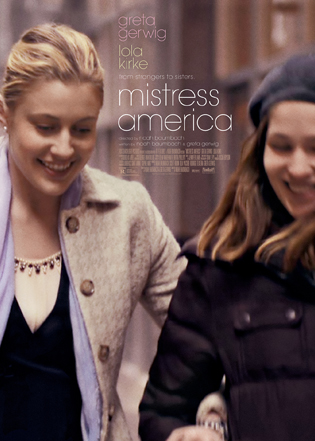 24. MISTRESS AMERICA
24. MISTRESS AMERICA
…until a few months later when Mistress America came out. Only just edging ahead of While We’re Young, Mistress America’s acerbic deconstruction of modern life has cemented Baumbach and star/co-writer Greta Gerwig as the premiere cinematic chronicler of millennials. Gerwig absolutely owns the film, with her flightly, commitment-free, self-deceptive persona far too familiar. Tremendously funny and packed with great dialogue and memorable characters, this is his best film to date.
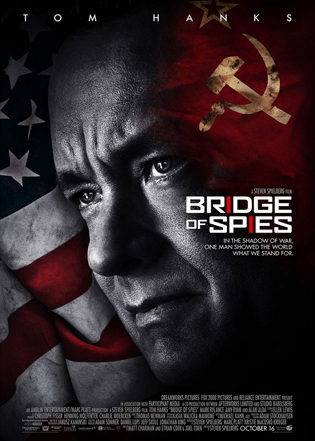 23. BRIDGE OF SPIES
23. BRIDGE OF SPIES
There’s a reason Steven Spielberg’s name has practically been a synonym for cinema for the past three decades. His mid-range stuff remains better than almost everyone else’s top-range stuff, a fact Bridge of Spies effortlessly reminds us. This taut Cold War thriller boasts his usual flair for character and visual storytelling, and his natural reliance on the everyman to tell a tale of epic intrigue. It’s a difficult narrative trick to pull off: this is effectively a film of two halves, and features multiple protagonists, but it’s all comes together perfectly. For all the rubbish too-cool-for-school talk of him being an flagrant sentimentalist, Spielberg manages to sneak the film’s real message in as he does with all of his historicals, quietly reminding us that the mistakes of the past are important lessons for the present.
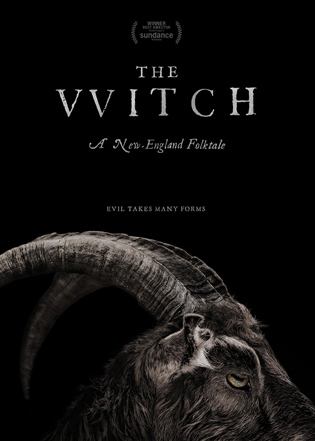 22. THE WITCH
22. THE WITCH
The first feature film from writer/director Robert Eggers is set during the era of the Salem witch trials, but not during the trials themselves. A banished family retreats to a remote farm, but they are soon targeted by a witch who lives in the nearby woods. It’s a compelling family drama, a perfect blend of realism and majesty, and features note-perfect performances. But it’s the film’s amazing style and the not-insignificant terror it builds to that amount to a tremendous work of horror.
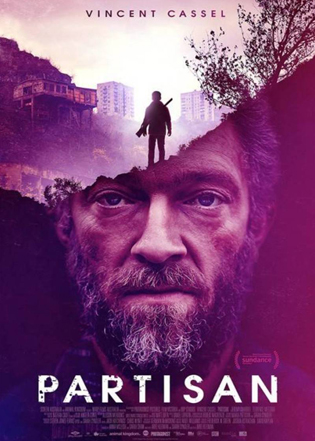 21. PARTISAN
21. PARTISAN
The debut from Melbourne’s award-winning wunkerkind Ariel Kleiman takes us into a cult, showing it from the inside out. One of the film’s most impressive tricks is how quickly it normalises this life for us before it becomes clear what’s really going on. Partisan possesses a tone all its own, and we’re never entirely sure where we are. The country and time period are never made clear, and it’s never specified if the outside world is war-torn or post-apocalyptic. It’s also not important. Beautifully restrained and impressively gentle, with a superb ending. Here’s hoping we get something else from Kleiman very soon.
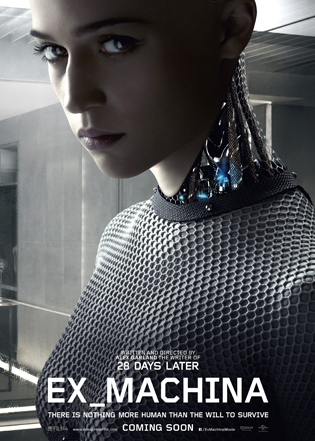 20. EX MACHINA
20. EX MACHINA
This is a film that I hope Ridley Scott sees. The various iterations of Blade Runner have evolved from “Deckard is not a replicant” to “Deckard thinks he might be a replicant” then “Deckard is definitely a replicant, no backsies”. Clearly, the best of these is the middle option, not just because ambiguity is the most dramatic and thought-inspiring, but because Blade Runner is ultimately a story about empathy. The same is true of Ex Machina. Protagonist Caleb has no reason to think he is a robot, but naturally comes to that conclusion, and is very soon proven wrong. But the most important moment is that he thinks he might be, and that pivot informs the emotional arc of a film that is the exact type of thoughtful, complex science fiction film we keep asking for.
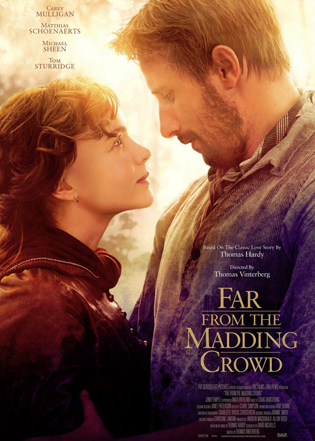 19. FAR FROM THE MADDING CROWD
19. FAR FROM THE MADDING CROWD
Anyone nagging thoughts about why needed an updated version of Thomas Hardy’s novel disappeared within moments. Boasting one of the best musical scores and some of the most gorgeous cinematography of any film this year, Thomas Vinteberg’s stunning adaptation keeps the setting period, but imbues the film with a modern, relevant feel. It is both surprisingly modern and jarringly anachronistic, and this contradiction itself justifies both its setting and the necessity of its existence. There’s a real restraint shown on Vinterberg’s part, allowing the human drama to drive the story along without ever resorting to The Big Moment. Carey Mulligan is unsurprisingly brilliant.
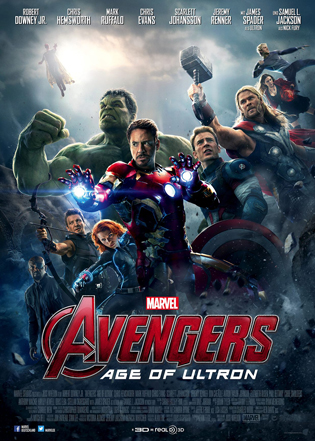 18. AVENGERS: AGE OF ULTRON
18. AVENGERS: AGE OF ULTRON
No film has run with idea of 21st century episodic cinema better than Avengers: Age of Ultron. I half expected this to be a romp in the style of the first film: a getting-the-band-back-together setup with great gags and imaginative moments of action. But when the film opens, the band is already back together, and there’s really only one direction for them to go from there. No writer or director deals with the idea of consequences in hyper-real genre settings better that Joss Whedon. This is his Buffy ethos writ large: you don’t get to eat the candy without then dealing with the stomach ache. It was a little disconcerting to see this in a film as massive as The Avengers, but disconcerting in a good way. Our heroes can’t help but be monstrous, as their best intentions so quickly and easily result in disaster. “You want to save the world, but you don’t want it to change,” says Ultron, echoing the common criticism of the inherent fascism that lies within the whole concept of superheroes. In the villain Ultron, the heroes see themselves: a being who genuinely wants to make the world better, but may have to destroy it to do so. Monsters all. Aesthetically, this is next-generation stuff, with comic book paneling splashed across the screen. It may not have the joyous thrill of the first film, where simply seeing these people in a room together – Cap fights Thor! Tony Stark says the word “Hulk”! – was enough to get the blood going, and that’s entirely why this is the superior film.
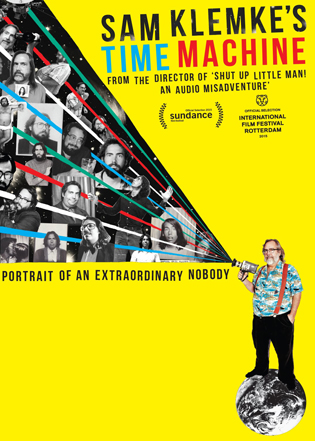 17. SAM KLEMKE’S TIME MACHINE
17. SAM KLEMKE’S TIME MACHINE
This incredible documentary from South Australia is a collage of sorts. Editing together the home movies made by Sam Klemke, an American man obsessed with documenting his own life every New Year’s Eve, the film displays the progression of Sam from a sad-but-ambitious 20-year-old to the sad-but-ambitious man he is today. His story is juxtaposed with NASA’s Voyager mission in a way that makes far more sense in context, comparing the profundity and uselessness of both endeavours, the abrasive truthfulness of one and the baffling self-censorship of the other. What could have been a poorly-judged and self-reflexive inclusion of the documentary itself into the narrative – meta in the way that everything is meta nowadays – turns out to be vital to the story. Usually, documentaries that profoundly and overtly affect their subjects are annoying in their meddling, but this one does it so cleverly and essentially. Quite possibly a work of genius.
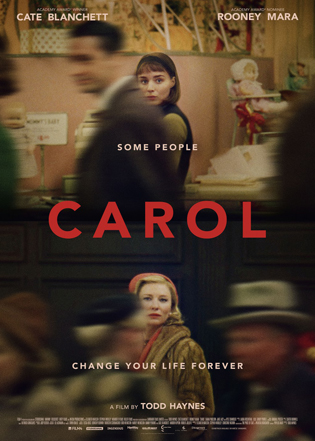 16. CAROL
16. CAROL
This period drama from Todd Haynes is far less stylised than his Douglas Sirk tribute Far From Heaven, but the flairs of the auteur are still present. The relationship that forms between Cate Blanchett’s Carol and Rooney Mara’s Therese feels entirely natural, and more complex than a politically-agitating love story might. The moment the film hooked me came in the beginning when Carol, more experienced and slightly predatory, turns on a train set in the department store, unseen. This moment is the key to unlocking her seductive approach: someone who will buck against the conventions and rules of the world, but always out of sight. She maintains her power and grace even as we see her vulnerabilities shine through. It’s the type of nuanced performance we don’t see often enough, one that acknowledges the truth of humans possessing diamaetrically opposing traits, often at the same time. Never exploitative, never hyper-stylised, this is up there with the best of Haynes.
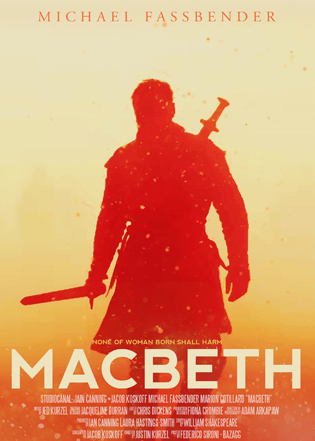 15. MACBETH
15. MACBETH
Justin Kurzel’s Macbeth may be my favourite ever adaptation of the play. I’ve always found it to be a difficult text: directors seem to get caught up when they adapt it, and I’m not sure why. Perhaps it’s just me. But so many adaptations feel primarily like exercises in form, fascinating but distancing. Ultimately, all I really want from a Shakespeare adaptation is to be told something I don’t know about a play I’ve read and seen a lot, and Kurzel absolutely finds new angles. His Lady Macbeth is far less culpable and conniving than she is usually depicted, these slight adjustments and interpretive differences altering the story’s entire DNA. Macbeth himself, a driven and furious man consumed by his own ambition, feels, oddly, to be less tragic than usual, which I also love. But my love of this film does not stem purely from a new angle on an old favourite. Kurzel does some truly amazing sensory work, with an opening sequence in particular that should be the envy of all directors

14. THE REVENANT
There’s a weird trick at play in this film: The Revenant is elegiac and beautiful like a Malick film, but also brutally visceral. It’s a contradiction that shouldn’t work nearly as well as it does, but director Alejandro González Iñárritu has been developing a style that feels a million miles away from his Amoros Perros and 21 Grams aesthetics. That’s good, because those films never remotely worked for me. Here, he mixes poetry, savagery and the mundanity of reality into a brilliant whole. I’ve rarely felt more tense than the famed bear attack sequence, and the opening assault on the camp is one of my favourite sequences this year.
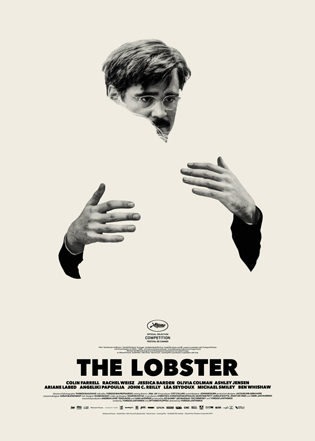 13. THE LOBSTER
13. THE LOBSTER
I keep thinking we’ve approached a point in postmodern culture where everything that can be tried has been tried. And although this feels like a prediction akin to “No one will need more than 637kb of memory” or “Everything that can be invented has been invented”, it seems like even the best filmmakers generally impress us with new and brilliantly-executed takes on what is ultimately the familiar. Very few actually show us something that feels new. This puts Yorgos Lanthimos in a pretty exclusive club. The Lobster’s tragicomic science fiction future is unafraid of wearing its metaphor on its sleeve: anyone who isn’t in a relationship is, in this world, shipped off to a place where they will be expected to partner with someone with whom they have one very specific trait in common. If they fail, they will be turned into the animal of their choice. Just when you think you have this film figured out, it swings wildly off in another direction. Like all the best science fiction, this one explores every facet of its concept and world, giving us numerous memorable and richly-drawn characters, and a career-best performance from Colin Farrell. And so, so funny.
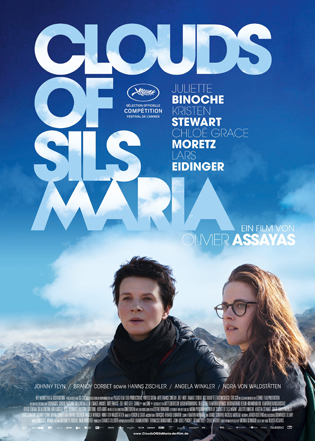 12. CLOUDS OF SILS MARIA
12. CLOUDS OF SILS MARIA
This deeply self-referential drama about an actress returning to the two-hander play that made her a star in her youth – now taking on the older role – was one of the most affecting surprises of the year. Director Olivier Assayas doesn’t waste any time obfuscating the parallels between the stageplay and Maria’s own life, and that overt mirroring works in the film’s favour. It’s a stunning thing to look at, with the Swiss Alps so aesthetically seductive, it’s almost porn. Juliette Binoche, Kristen Stewart and Chloë Grace Moretz are all perfect in their parts. Minutes after it finished, I was ready to watch it again.
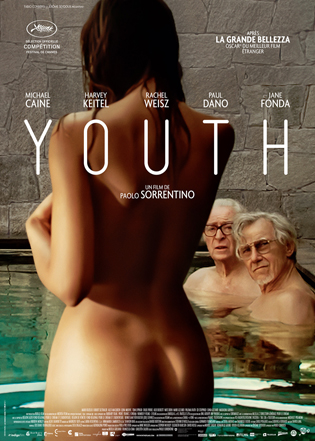 11. YOUTH
11. YOUTH
People talk about certain directors having cinema in their veins. They understand it and communicate through it on a fundamental, innate level, occupying the opposite end of the spectrum to that sort of filmmaking Hitchcock once disparagingly called “radio with pictures”. Paolo Sorrentino is undoubtedly one of those people. Youth feels like it’s been surreptitiously and cunningly snuck into the middle of the Blue Rinse Wave deck, hiding between The Best Exotic Marigold Hotel and The Hundred Food Journey, but it’s so much more revolutionary than that. Innately connected to the language and possibility of cinema, Sorrentino explores (spoiler alert) youth and aging, regret and living in the moment. He collides pop music with classical, mashing together apparent opposites in both theme and material.
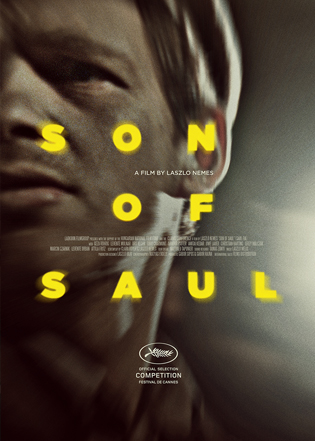 10. SON OF SAUL
10. SON OF SAUL
A Holocaust drama unlike any other, Son of Saul propels along one daring conceit: for the entire running time, we remain in the orbit of the protagonist. In every shot, he is our foreground, his head obscuring most of the screen. The rest of the world remains in the periphery, obscured and out of focus, and then suddenly in focus and backgrounded, and then midgrounded, but never the main event. This makes it feel both incredibly real and incredibly distancing: it is intrusive, yet intimate. As a Jewish prisoner taskes with luring other Jews into the showers, then later cleaning up their remains, Saul is already a tragic figure. When he witnesses a boy survive the gassing, only to be killed by a German soldier, he undertakes to give the boy a proper Jewish burial, saving his body from medical experiments and cremations. His determination to find a Rabbi to perform the ritual puts many in danger, including himself, and directly results in some deaths. No film has better illustrated how little value human life has in these camps; contrasting this with a man who overvalues death is the film’s true conceit. The ending, completely unpredictable and devoid of both sentiment and cynicism, is the perfect conclusion, a supreme moment of character and theme coming together in a way that cements this film as a true great.
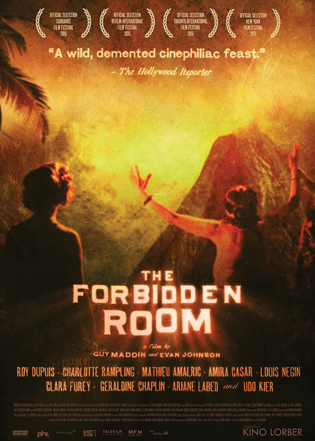 9. THE FORBIDDEN ROOM
9. THE FORBIDDEN ROOM
Guy Maddin’s The Forbidden Room may be his best feature yet. It’s utterly hilarious, but still truly experimental, even by Maddin’s standards. It’s a mandlebrot of narrative as we fall further and further into the rabbit hole, with familiar patterns emerging the further we go. He continues his manic silent film aesthetic to incredible effect, creating images on screen that feel like the manifestations of surreal fever dreams. There is nobody doing what Maddin is doing, and his unique inventiveness puts so many other supposed innovators to shame. One of the most amazing experiences of the year.
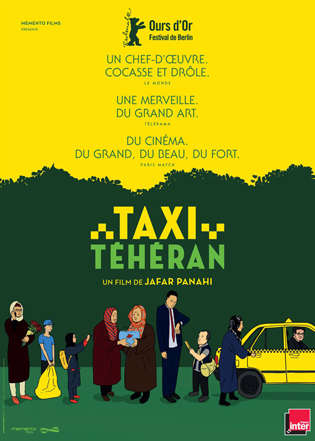 8. TEHRAN TAXI
8. TEHRAN TAXI
Jafar Panahi once again blurs the line between fiction and documentary, even moreso than in his seminal This Is Not a Film. It’s all staged, of course (or is it? The guy selling CDs car to car may have been real), and to what end? To explore contemporary Iranian society in a way that no other work of fiction or nonfiction can. We’re on the streets, with the people, and this act feels subversive in itself. Panahi brings to light different parts of Iranian society, playing himself, and the fact that he’s seen driving a cab instead of making films – even to the cinephiles he picks up who immediately recognise him – is his typically acerbic way of commenting on his current role within it. The relationship between Panahi and his precocious niece is the highlight, and the final inevitable moments are as quietly momentous as anything that came before.
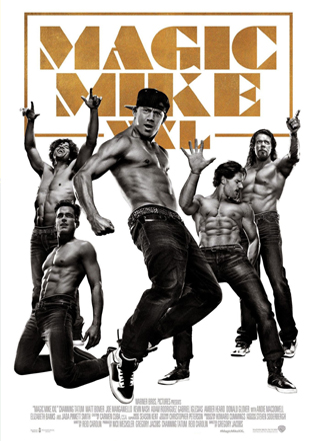 7. MAGIC MIKE XXL
7. MAGIC MIKE XXL
This film has no business being as great as it is. Not least of all because it’s a sequel to a film that also had no business being as great as it was. The first Magic Mike felt like a fluke: a fun, disposable idea that accidentally stumbled into greatness. The idea that the second film should capture similar lightning, let alone improve upon its predecessor, is scaling the oily pole of improbability. And yet here we are. The ingeniously-titled Magic Mike XXL takes the worn sequel premise of a roadtrip to a convention that is improbably tied to the profession of the lead, and takes it to completely unexpected directions. Absent is an unlikely plot built around a contrived threat. This is a road movie in which the stakes are low, but the investment is high. Each sequence is a vignette that plays almost like the golden age of classic musicals: while plot points are advanced by songs in the latter, they are advanced by brilliantly-choreographed striptease dances here. Everything is on point, from the screenplay by Reid Carolin, the direction by Gregory Jacobs, and the performances from Channing Tatum, Kevin Nash, et al. But Steven Soderbergh’s influence is palpable here; as cinematographer (credited as Peter Andrews), editor (as Mary Ann Bernard), and producer (under his own name), it doesn’t take much effort for me to shovel some of the credit onto my favourite director, even if he’s not the director here. But what really makes the film soar is its sense of inclusiveness: this is, importantly, a party to which everyone is invited. It’s not just attractive people with unrelatable problems, their whitebread world occasionally augmented by an overweight or ethnic extra thrown in for the sake of tokenism. No, all ethnicities, all sizes, all orientations are welcome here. These guys are here to make everyone feel like they’re royalty, and it fulfills the fantasy remit in a way that the unwatchable, sexless 50 Shades of Grey could never dream of. These guys are here for everyone, and they’ve got no time for searing Blue Steel glances to make themselves look intense. They break into broad smiles because they’re having fun, and the point is that we’re all meant to.
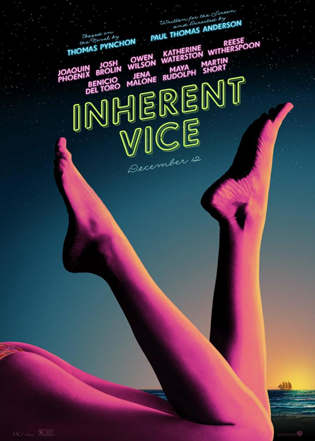 6. INHERENT VICE
6. INHERENT VICE
It was a frustrating wait for this film to come out in Australia, but it’s not difficult to see why the distributors were terrified by it: it’s deliberately obfuscating, with a story that isn’t so much difficult to follow, as it is pushed deep into mumbled dialogue so it doesn’t get in the way of the film. Could anyone but Paul Thomas Anderson pull this off? Inherent Vice happens to be his funniest film to date, with Joaquin Phoenix’s Doc possibly an even more comical stoner detective than Jeff Bridges’ The Dude. This is a film of a mood: a detective story with 1970s archetypes and music, that deliberately removes all the pesky plot distractions which risk pulling you away from that mood. It’s an experiment that should fail, but it soars in a way that feels like an elaborate magic trick.
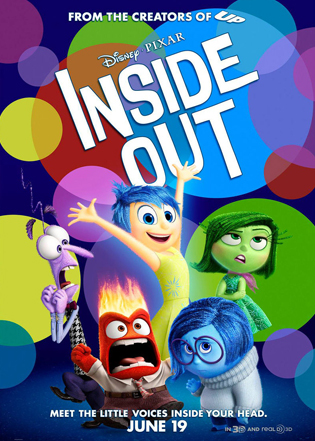 5. INSIDE OUT
5. INSIDE OUT
Earlier this year, I believed this was the best Pixar film since Toy Story 3. With more distance, I’m starting to think it may actually be the studio’s best. (But, cowardly, I won’t actually commit to that claim. Yet.) Inside Out is not just the funniest and most imaginative film in the studio’s canon, but also the most important. If kids’ films are all about learning to deal with life, then this is the most complex and useful film, one that is not about pat happy endings or getting what you want, but learning to deal with the rich tapestry of life. Learning that sadness isn’t always a negative, and that it often works in tandem with happiness. It almost serves as an intro to depression; we’re never exposed to that particular complex emotion/state, but we’re given the tools to deal with it down the track. Without that incredibly important subtext, the film would still be a serious contender for the best of the year. The way in which the mind is physically depicted is truly ingenious, with perfect detail and logic. Also perfect is the voice cast, with Phyllis Smith’s Sadness the biggest stroke of genius in a roster of strokes of genius. The emotion in this film is palpable, and it took a gigantic effort of will not to collapse in a puddle of tears at every second moment. This film is a masterpiece.
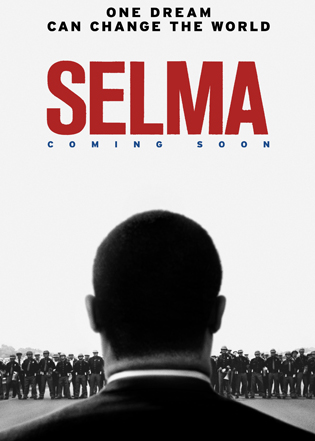 4. SELMA
4. SELMA
The story of Martin Luther King Jnr’s Selma march feels the sort of film that could only be cinematically told in one of two ways: in a music-swelling award-baiting manner, or a handheld verite (also award-baiting) style. Director Ana DuVernay eschews both options in favour something different: a stylistic flair that not only services this particular story perfectly, but engages with tremendous energy. The most impressive thing about this film is how much of a process story it is. It doesn’t forget the lofty ideals that its true life characters are fighting for, but in focusing on the minutiae of the process, it reveals just how knife’s-edge even the biggest fights can be. Every little decision will adjust the course of the movement, and seeing the conflicts within the movement when it comes to approaching even the smallest of events, is itself enlightening and atypically cinematic. In this sense, it’s the most inspired depiction of social justice ever: it’s not just about the fight and the speech, it’s about strategy and detail. It’s also a keenly emotional film that was entirely faultless.
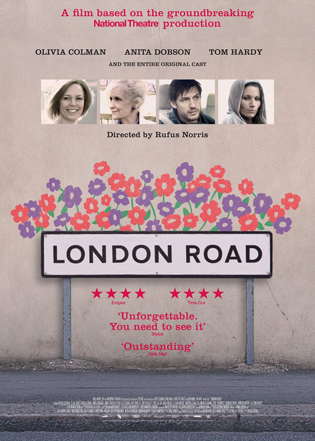 3. LONDON ROAD
3. LONDON ROAD
Has there every been a film like London Road? I’m genuinely struggling to think of one. The closest I can think of is Clio Barnard’s The Arbor, another film that spun the verbatim words of real people and turned them into something so cinematic. This is a legitimately groundbreaking film that – and I know how this sounds, but to hell with it, it’s true – had me actually weeping in the cinema at how perfect it was. It is inventive in its format, but I was not prepared for how inventive it would be in its subtext. It’s not a murder mystery, even though it is, and it’s not a film about a community coming together, although it is. This is a film that is as damning as it is celebratory, one that shows that the community was at war with a killer, and the working girls who were the victims of both groups. Gloriously constructed deeply riveting, with something genuinely meaningful at its heart. This is a masterpiece.
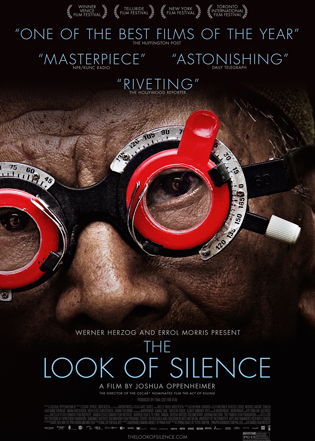
2. THE LOOK OF SILENCE
Joshua Oppenheimer’s companion piece to his seminal The Act of Killing is, arguably, the superior work. Told from the perspective of one of the victims (instead of, with the previous film, the perpetrators), Oppenheimer illuminates something even deeper than the shocking revelations we saw two years ago. The lead figure, a door-to-door optometrist, confronts the men who had killed his brother two years before the optometrist was even born. That he should be an optometrist, going to the houses of his countrymen and helping them to see better, is a metaphor that might have seen overcooked in a work of fiction. In a documentary, it’s a gift. He brings the vision of these killers into focus as he forces them to gazes into the past, often to their frustration. Their eyes almost always well up at the mention of their past deeds, but they always deflect responsibility. Our lead is unrelenting: quiet and polite, but searingly incisive, he is a masterful interviewer. His control is all the more impressive given the emotion clearly bubbling under the surface. His piercing stare is all the trial these men will get, and it’s devastating.
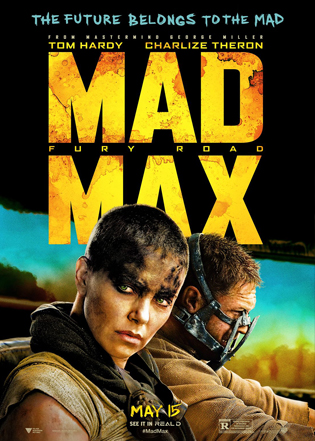 1. MAD MAX: FURY ROAD
1. MAD MAX: FURY ROAD
I really hate being predictable, but what’s the alternative? Not proclaiming Fury Road the best film of the year? That doesn’t even make sense. Mad Max: Fury Road is the sort of film you feel all films should be, but almost never are. George Miller’s aesthetic is completely unburdenered and let loose here: it’s not the outlandish impossibilities of CGI that traps so many filmmakers, but an ideal of action cinema. Max is, across the series, an increasingly mythological figure, and here he feels less like a person and more like someone remembering him long after the fact. This is Furiosa’s tale, and the oft-touted subversive feminist angle is successful because it’s not framed as such. This is simply the story Miller is interested in telling, and the fact that it happens to be so distinctly feminist as it is, is more an indicatment of all other cinema than a proclamation of itself. But then, everything in this film is an indictment of all other cinema. Few films that exist almost exclusively in the action genre can lay claim to such clearly-choreographed and purely-executed sequences of joyous mayhem. That the characters should turn around two-thirds of the way through and go back the way they came is a powerful choice. Because this film is about changing the world you live in, not shutting it out and pretending it no longer exists. Joyously, the most purely visceral action film of the year – of the decade – also has a lot to say.
New Release Films Seen In 2015:
American Sniper, Kingsmen: The Secret Service, Selma, What We Did On Our Holidays, Rosewater, The Interview, Fifty Shades of Grey, Inherent Vice, The Second Best Exotic Marigold Hotel, X+Y, Jupiter Ascending, Big Eyes, Chappie, The Homesman, Top Five, While We’re Young, Avengers: Age of Ultron, Son Mektup (Last Letter), Çalsin Sazlar (Let the Music Play), Mad Max: Fury Road, Tomorrowland, Ex Machina, Partsian, Hot Girls Wanted, Inside Out, Clouds of Sils Maria, Jurassic World, Far From the Madding Crowd, Women He’s Undressed, Terminator: Genisys, Magic Mike XXL, Ant-Man, Trainwreck, Mission: Impossible – Rogue Nation, Tehran Taxi, The Overnight, Southpaw, The Man From UNCLE, Song of the Sea, The Look of Silence, Irrational Man, The Witch, Phoenix, Best of Enemies, Turbo Kid, The Forbidden Room, Me and Earl and the Dying Girl, A Pigeon Sat On a Branch Contemplating Existence, The Dressmaker, London Road, Blackhat, En Chance Til (A Second Chance), CitizenFour, Legend, Macbeth, The Martian, Sicario, Brooklyn, Bridge of Spies, The Walk, Carol, The Wolfpack, The Lobster, Holding the Man, Son of Saul, Spectre, Youth, Secret In Their Eyes, The Hunger Games: Mockingjay Part Two, Room, Knight of Cups, Mistress America, Avengers: Age of Ultron, The Gift, The Duke of Burgundy, Creed, Last Cab To Darwin, Wild Tales, Ant-Man, Cut Snake, The End of the Tour, Slow West, In the Heart of the Sea, The Good Dinosaur, Truth, Trangerine, The Danish Girl, Strangerland, The Revenant, Mr Holmes, American Ultra, Fantastic Four, Sam Klemke’s Time Machine, Girlhood, Gayby Baby, A Walk In the Woods, 99 Homes, Mississippi Grind, Star Wars: The Force Awakens, Queen of Earth, Leviathan, The Visit, Love & Mercy, Steve Jobs.
Older Films Watched In 2015:
Jaws (1975), Panama Hattie (1942), Cabin in the Sky (1943), I Dood It (1943), The Heavenly Body (1944), Meet Me In St Louis (1944), The Clock (1945), Ziegfeld Follies (1945), Yolanda and the Thief (1945), Undercurrent (1946), Till the Clouds Roll By (1946), The Pirate (1948), Madame Bovary (1949), Father of the Bride (1950), Father’s Little Dividend (1951), An American In Paris (1951), The Bad and the Beautiful (1952), The Story of Three Loves (1953), The Band Wagon (1953), The Long, Long Trailer (1953), Brigadoon (1954), The Cobweb (1955), Kismet (1955), Lust For Life (1956), Tea and Sympathy (1956), Designing Women (1957), The Seventh Sin (1957), Gigi (1958), The Reluctant Debutante (1958), Some Came Running (1958), Home From the Hill (1960), Bells Are Ringing (1960), The Four Horsemen of the Apocalypse (1962), Two Weeks In Another Town (1962) The Courtship of Eddie’s Father (1963), Goodbye Charlie (1964), The Sandpiper (1965), On a Clear Day You Can See Forever (1970), A Matter of Time (1976), Life With Judy Garland: Me and My Shadows (2001), Much Ado About Nothing (2012), Kramer vs Kramer (1979), Certified Copy (2010), Erin Brockovich (2000), And Everything Is Going Fine (2010), Schizopolis (1996), Ikarie XB 1 (1963), The Cabin in the Woods (2012), Hamlet (1996), Dawn of the Planet of the Apes (2014), Victim (1961), Being John Malkovich (1999), Human Nature (2001), Adaptation. (2002), Confessions of a Dangerous Mind (2002), Eternal Sunshine of the Spotless Mind (2005), Synecdoche, New York (2008), Abigail’s Party (1977), Twin Peaks: Fire Walk With Me (1992), Pretty s a Picture: The Art of David Lynch (1997), Lynch (One) (2007), Walking and Talking (1996), Lovely & Amazing (2001), Friends With Money (2006), Please Give (2010), Sweet Charity (1969), Cabaret (1972), Lenny (1974), All That Jazz (1979), Star 80 (1983), Summer Wars (2009), 2 Friends (1987), Sweetie (1989), An Angel At My Table (1990), The Piano (1993), The Portrait of a Lady (1996), 2001: A Space Odyssey (1968), Holy Smoke (1999), In the Cut (2003), Bright Star (2009), Easy A (2010), Pollyanna (1960), 22 Jump Street (2014), Adventureland (2009), Magokoro (Sincere Heart) (1953), Kono Hiroir Sora No Dokoka Ni (Somewhere Beneath the Wide Sky) (1954), Uruwashiki Saigetsu (Beautiful Days) (1955), Izumi (Fountainhead) (1956), Anata Kaimasu (I Will Buy You) (1956), Kabe Atsuki Heya (The Thick-Walled Room) (1956), Kuroi Kawa (Black River) (1957), Ningen No Jôken (The Human Condition I: No Greater Love) (1959), Ningen No Jôken (The Human Condition II: Road To Eternity) (1959), Ningen No Jôken (The Human Condition III: A Soldier’s Prayer) (1961), Karami-Ai (The Inheritance) (1962), Harakiri (1962), Kwaidan (Ghost Stories) (1964), Jöi-Uchi: Hairyö Tsuma Shimatsu (Samurai Rebellion) (1967), Inochi Bô Ni Furô (Inn of Evil) (1971), Kaseki (The Fossil) (1975), Tôkyô Saiban (Tokyo Trail) (1983), State and Main (2000), Dredd (2013), I Love You To Death (1990), The Out of Towners (1970), Eraserhead (1977), The Elephant Man (1980), The Ipcress File (1965), Taxi To the Dark Side (2007), Blue Velvet (1986), Wild At Heart (1990), Lost Highway (1997), The Straight Story (1999), Mulholland Dr. (2001), Inland Empire (2006), La Pointe-Courte (1955), Cléo de 5 á 7 (1962), Wet Hot American Summer (2001), Le Bonheur (1965), Les Créatures (The Creatures) (1966), Lions Love (1969), Daguerroéotypes (1976), L’Une Chante, L’Autre Pas (One Sings, the Other Doesn’t) (1977), Documenteur (1980), Mur Murs (1981), Vagabond (1985), Kung Fu Master (1987), Jane B. Par Agnès V. (Jane B. For Agnes V.) (1988), Jacquot de Nantes (1991), Le Demoiselles Ont Eu 25 Ans (The Young Girl Turns 25) (1993), Sneakers (1992), Les Cent et Une Nuits de Simon Cinéma (A Hundred and One Nights) (1995), The China Syndrome (1979), L’Univers de Jacques Demy (The World of Jacques Demy) (1995), One Flew Over the Cuckoo’s Nest (1975), Les Glaneurs et la Glaneuse (The Gleaners & I) (2000), Les Glaneurs et la Glaneuse… Deux Ans Après (The Gleaners & I: Two Years Later) (2003), Cinévardaphoto (2004), Quelques Veuves de Noirmoutier (2006), Les Plages d’Agnès (The Beaches of Agnès) (2008) The Godfather (1972), The Godfather Part II (1974), Mission: Impossible – Ghost Protocol (2011), The Godfather Part III (1990), L’Uccello Dalle Piume Di Cristallo (The Bird With the Crystal Plumage) (1970), Il Gatto a Nove Code (The Cat O’ Nine Tails) (1971), 4 Mosche di Velluto Grigio (Four Flies on Grey Velvet) (1971), Le Cinque Giornate (The Five Days) (1973), Suspiria (1977), Inferno (1980), Tenebre (1982), Phenomena (1985), Opera (1987), Two Evil Eyes (1990), Trauma (1993), City Lights (1931), The Bed-Sitting Room (1969), Bang! You’re Dead (1954), The Last Time I Saw Michael Gregg (2011), Mad Max (1979), Mad Max 2: The Road Warrior (1981), Mad Max: Beyond Thunderdome (1985), La Sindrome Di Stendhal (The Stendhal Syndrome) (1996), Il Fantasma Dell’Opera (The Phantom of the Opera) (1998), Non Ho Sonno (Sleepless) (2001), The Cardplayer (2004), Ti Piace Hitchcock? (Do You Like Hitchcock?) (2005), La Terza Madre (Mother of Tears) (2007), Giallo (2009), Dracula 3D (2012), Carnival of Souls (1962), The Big Lebowski (1998), Scott Pilgrim vs the World (2010), Night of the Living Dead (1968), There’s Always Vanilla (1971), Season of the Witch (Hungry Wives) (1972), The Crazies (1973), Martin (1977), Dawn of the Dead (1978), Knightriders (1981), Creepshow (1982), Iron Man (2008), Day of the Dead (1985), Monkey Shines (1988), The Dark Half (1993), Bruiser (2000), Land of the Dead (2005), Diary of the Dead (2007), Survival of the Dead (2009), The Jericho Mile (1979), Thief (1981), The Keep (1983), Manhunter (1986), LA Takedown (1989), The Last of the Mohicans (1992), Heat (1995), The Insider (1999), Ali (2001), Collateral (2004), Miami Vice (2006), The Incredible Hulk (2008), Public Enemies (2009), Liebe Ist Kälter Als Der Tod (Love Is Colder Than Death) (1969), Katzelmacher (1969), Götter Der Pest (Gods of the Plague) (1970), Das Kaffeehaus (1970), Der Amerikanische Soldat (The American Soldier) (1970), Warum Läuft Herr R. Amok (Why Does Her K Run Amok?) (1970), Die Niklashauser Fahrt (The Niklashausen Journey) (1970), Rio Das Mortes (1971), Pioniere In Ingolstadt (Pioneers In Ingolstadt) (1971), Whity (1971), Warnung Vor Einer Heiligen Nutte (Beware of a Holy Whore) (1971), Händler Der Vier Jahreszeiten (The Merchant of Four Seasons) (1971), Die Bitteren Tränen Der Petra Von Kant (The Bitter Tears of Petra Von Kant) (1972), Bremer Freiheit: Frau Geesche Gottfried – Ein Bürgerliches Trauerspiel (Bremen Freedom) (1972), Wildwechsel (Jailbait) (1973), Welt Am Draht (World on a Wire)I (1973), Iron Man 2 (2010), Nora Helmer (1974), Angst Essen Seele Auf (Ali: Fear Eats the Soul) (1974), Martha (1974), Effi Briest (1974), Thor (2011), Faustrecht Der Freiheit (Fox and His Friends) (1975), Mutter Küsters’ Fajrt Zum Himmel (Mother Kusters Goes To Heaven) (1975), Captain America: The First Avenger (2011), The Avengers (2012), Angst Vor Der Angst (Fear of Fear) (1975), Chinesisches Roulette (Chinese Roulette) (1976), Ich Will Doch Nur, Daß Ihr Mich Liebt (I Only Want You To Love Me) (1976), Satansbraten (Satan’s Brew) (1976), Frauen In New York (Women In New York) (1977), Iron Man Three (2013), Bolwieser (The Stationmaster’s Wife) (1977), Despair (1978), In Einem Jahr Mit 13 Monden (In a Year With 13 Moons) (1978), Die Ehe Der Maria Braun (The Marriage of Maria Braun) (1979), Die Dritte Generation (The Third Generation) (1979), Lili Marleen (1981), Thor: The Dark World (2013), Lola (1981), Theatre In Trance (1981), Die Sehnsucht Der Veronika Voss (Veronika Voss) (1982), Querelle (1982), Captain America: The Winter Soldier (2014), Trumbo (2007), Guardians of the Galaxy (2014), Blade Runner (Director’s Cut) (1982), The Grand Budapest Hotel (2014), Solaris (1972), It’s Such a Beautiful Day (2012), Die Hard (1988), It’s a Wonderful Life (1946), The Muppet Christmas Carol (1992), Franz (1972), Le Far West (1973).
Short Films Watched In 2015
Liza With a Z (1972), An Exercise In Discipline – Peel (1982), Passionless Moments (1983), After Hours (1984), A Girl’s Own Story (1984), Mishaps of Seduction and Conquest (1984), The Water Diary (2006), Musuko No Seishun (Youth of the Son) (1952), Lava (2015), Six Men Getting Sick (1967), Absurd Encounter With Fear (1967), The Alphabet (1968), The Grandmother (1970), The Amputee (Video) (1974), The Amputee (Film) (1974), The Cowboy and the Frenchman (1988), Premonitions Following an Evil Deed (1995), Absurda (2007), The Departure (2014), Columbite Tantalite (2013), L’Opera-Mouffe (diary of a Pregnant Woman) (1958), Du Côté de la Côte (1958), O Saisons, O Châteaux (1958), Les Fiances du Point Mac Donald Ou (Méfiez-Vous Des Lunettes Noires) (1961), Salut Les Cubains (1963), Else La Rose (1965), Oncle Yanco (Uncle Janco) (1967), Black Panthers (Huey) (1968), Réponse de Femmes: Notre Corps, Notre Sexe (Women Reply) (1975), Plaisir d’Amour En Iran (1976), Ulysse (1982), Les Dites Cariatides (The So-Called Caryatids) (1984), 7P Cuis, S de B, … A Saisir (1984), T’As de Beaux Escaliers, Tu Sais (You’ve Got Beautiful Stairs, You Know) (1986), Le Lion Volatil (2003), Histoire d’Une Vielle Dame (The Story of an Old Lady) (2003), Ydessa, Les Ours et Etc. (Ydessa, the Bears and Etc) (2004), Les Dites Cariatides Bis (2005), Cléo de 5 à 7: Souvenirs et Anecdotes (2005), Return (2015), Ray’s Big Idea (2015), Curve (2015), Les 3 Boutons (2015), City Tramp (1966), Das Kleine Chaos (Little Chaos) (1966), The Consultant (2011), A Funny Thing Happened on the Way To Thor’s Hammer (2011), Item 47 (2012), The Limited (2015), Hail to the King (2013), Agent Carter (2013), Junun (2015), The Kingdom of Doug (2013), Ah, L’Amour (1995), Genre (1996), Lily and Jim (1997), Billy’s Balloon (1998), Rejected (2000), The Animation Show/Intermission in the Third Dimension/The End of the Show (2003), The Meaning of Life (2005), Everything Will Be Okay (2006), I Am So Proud Of You (2008), Wisdom Teeth (2010), It’s Such a Beautiful Day (2011), World of Tomorrow (2015), Sanjay’s Super Team (2015).
